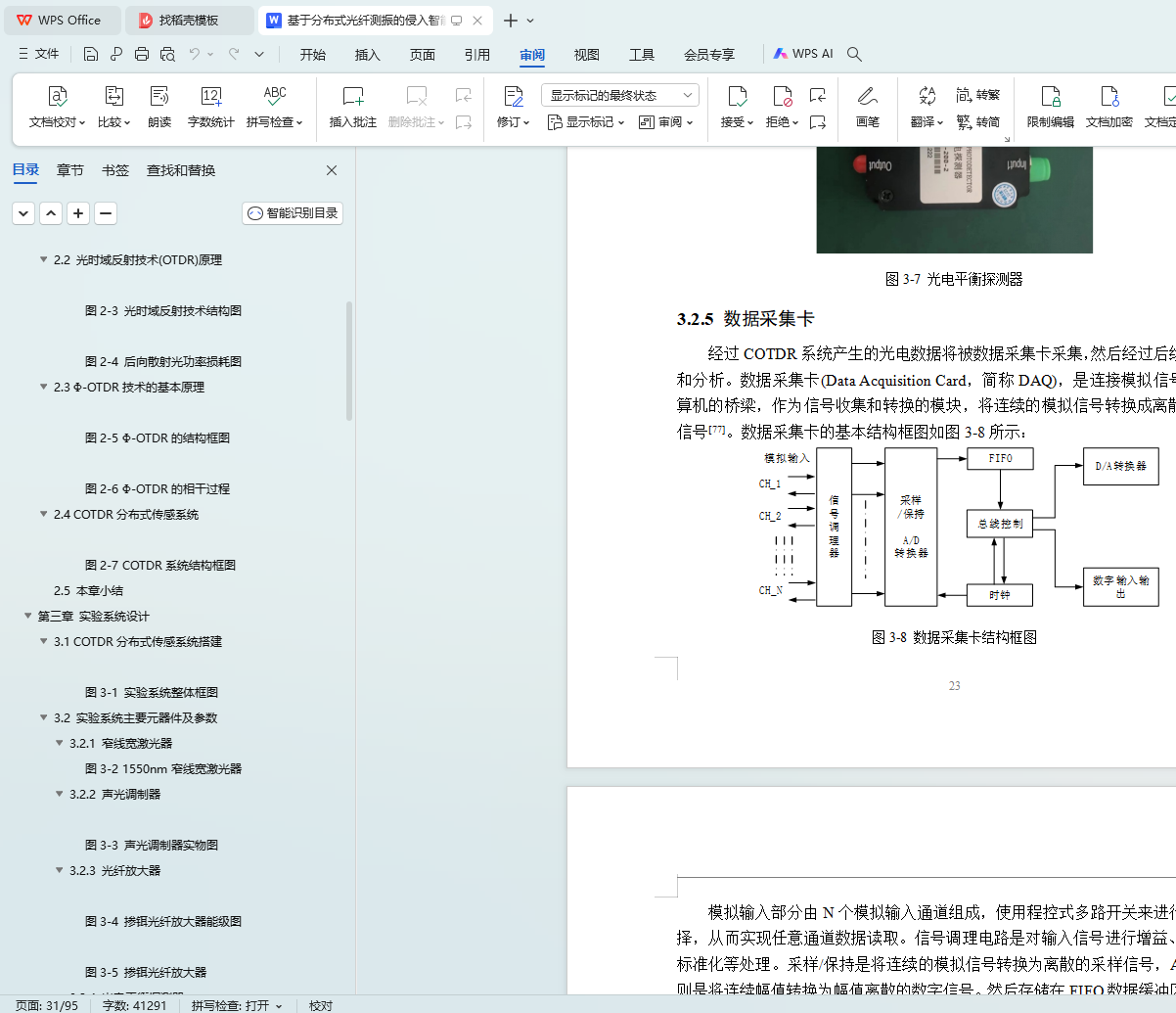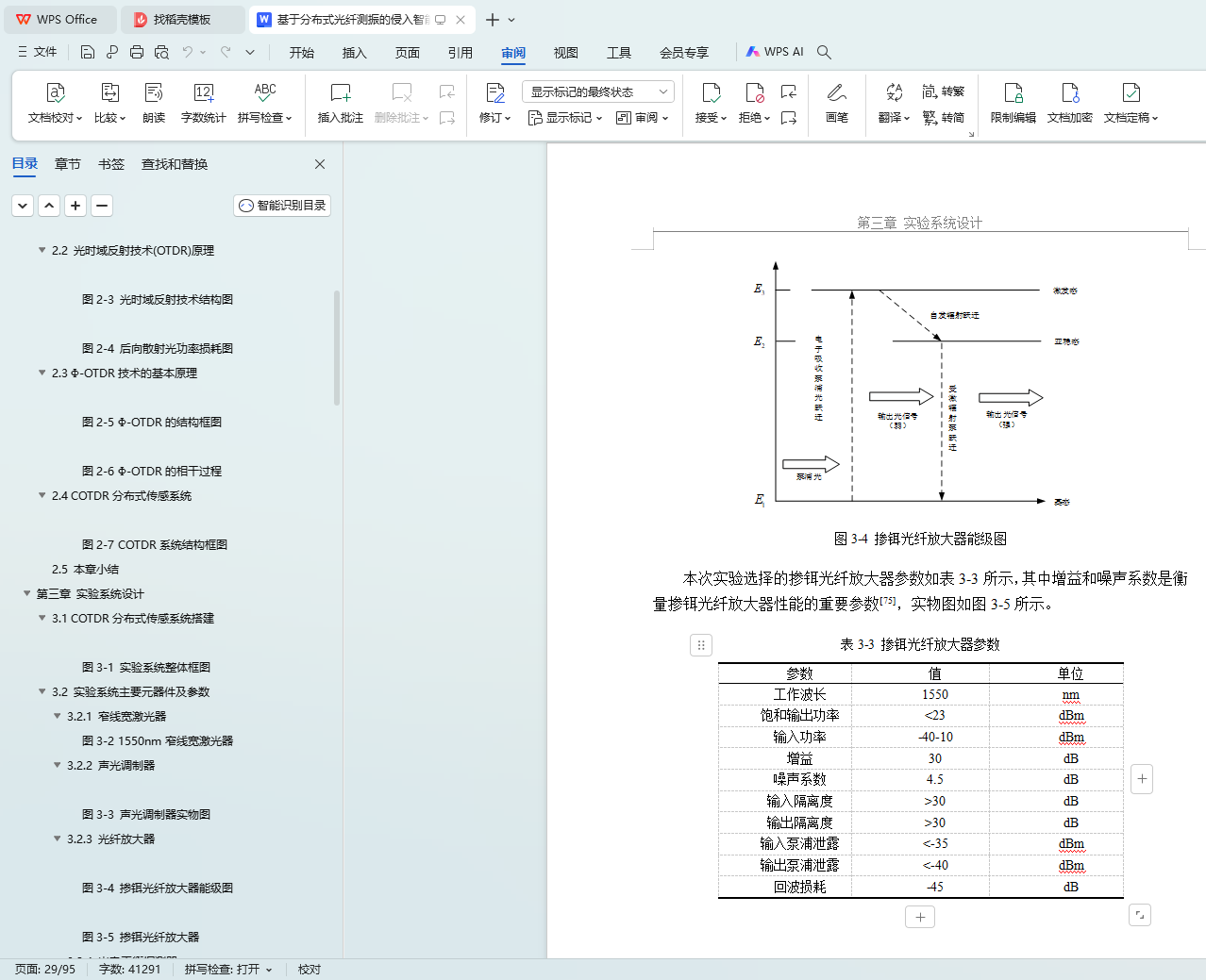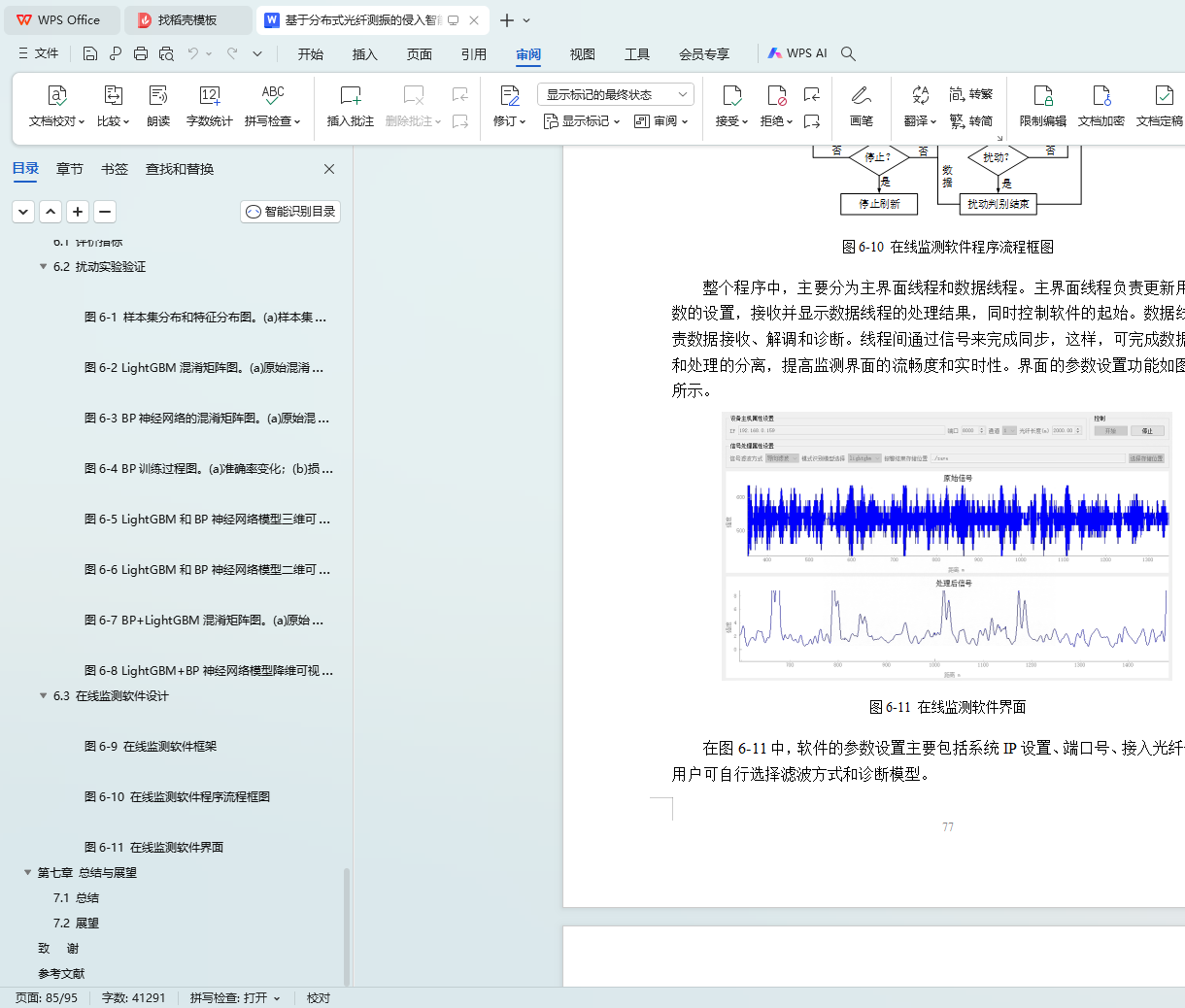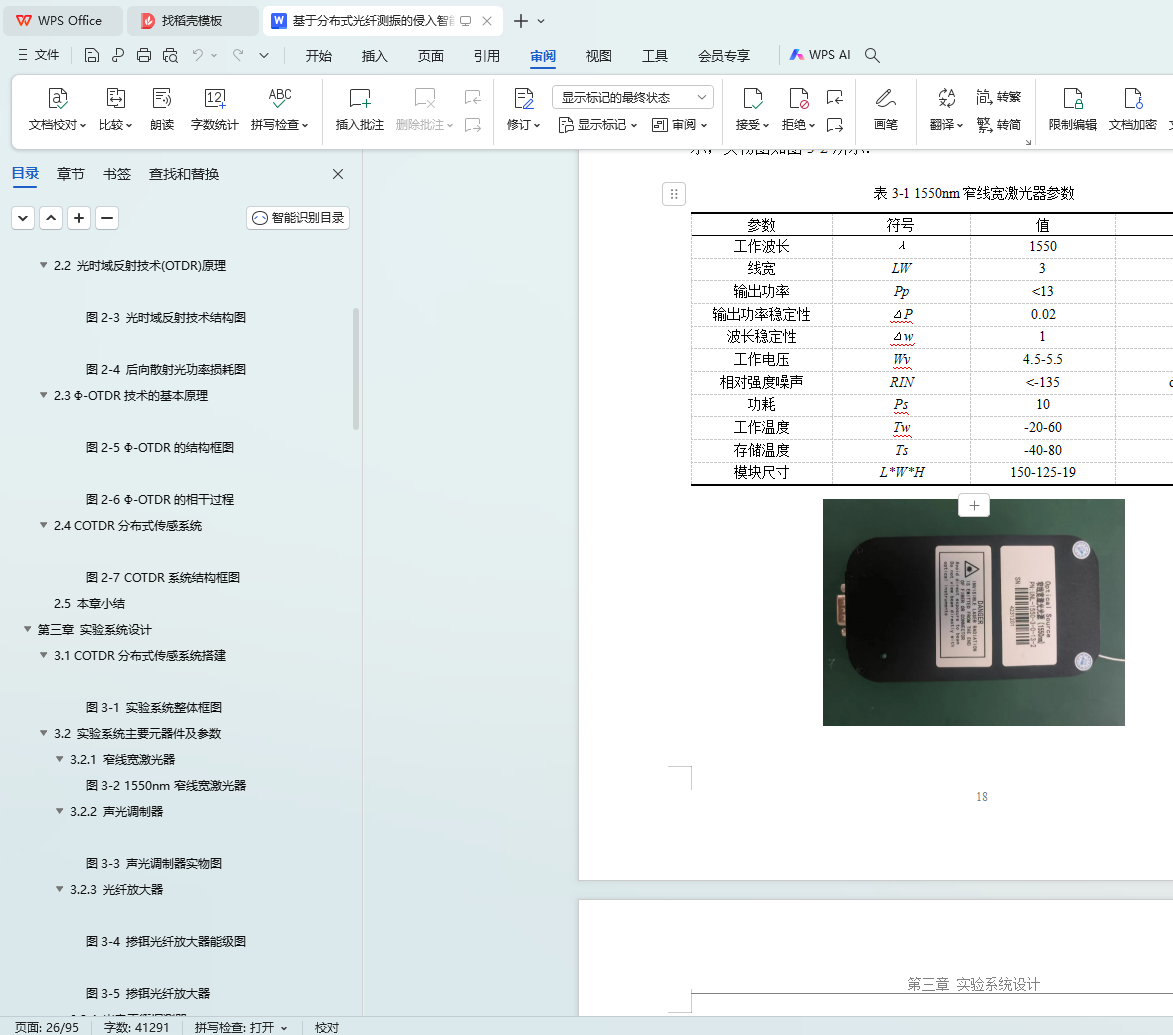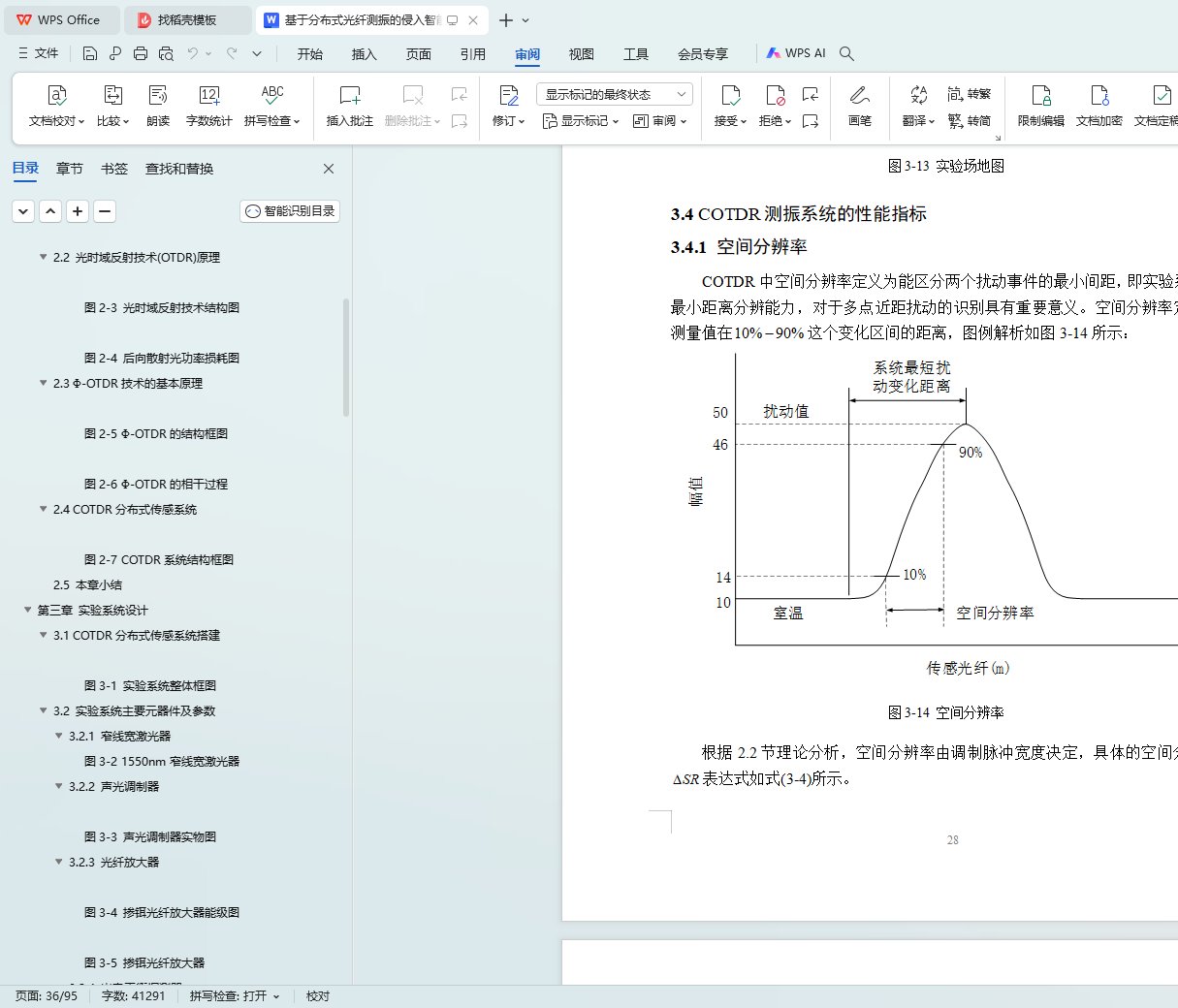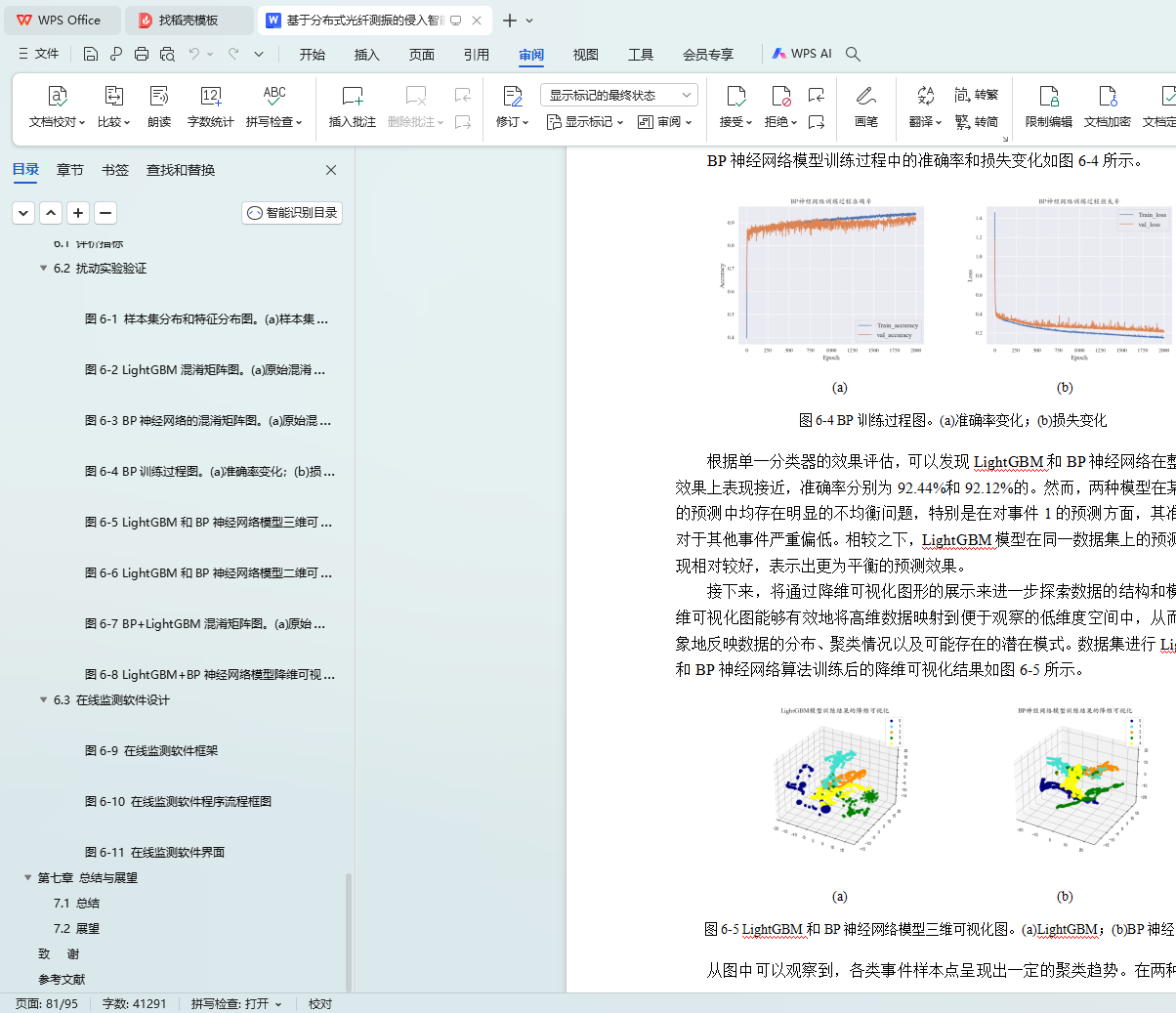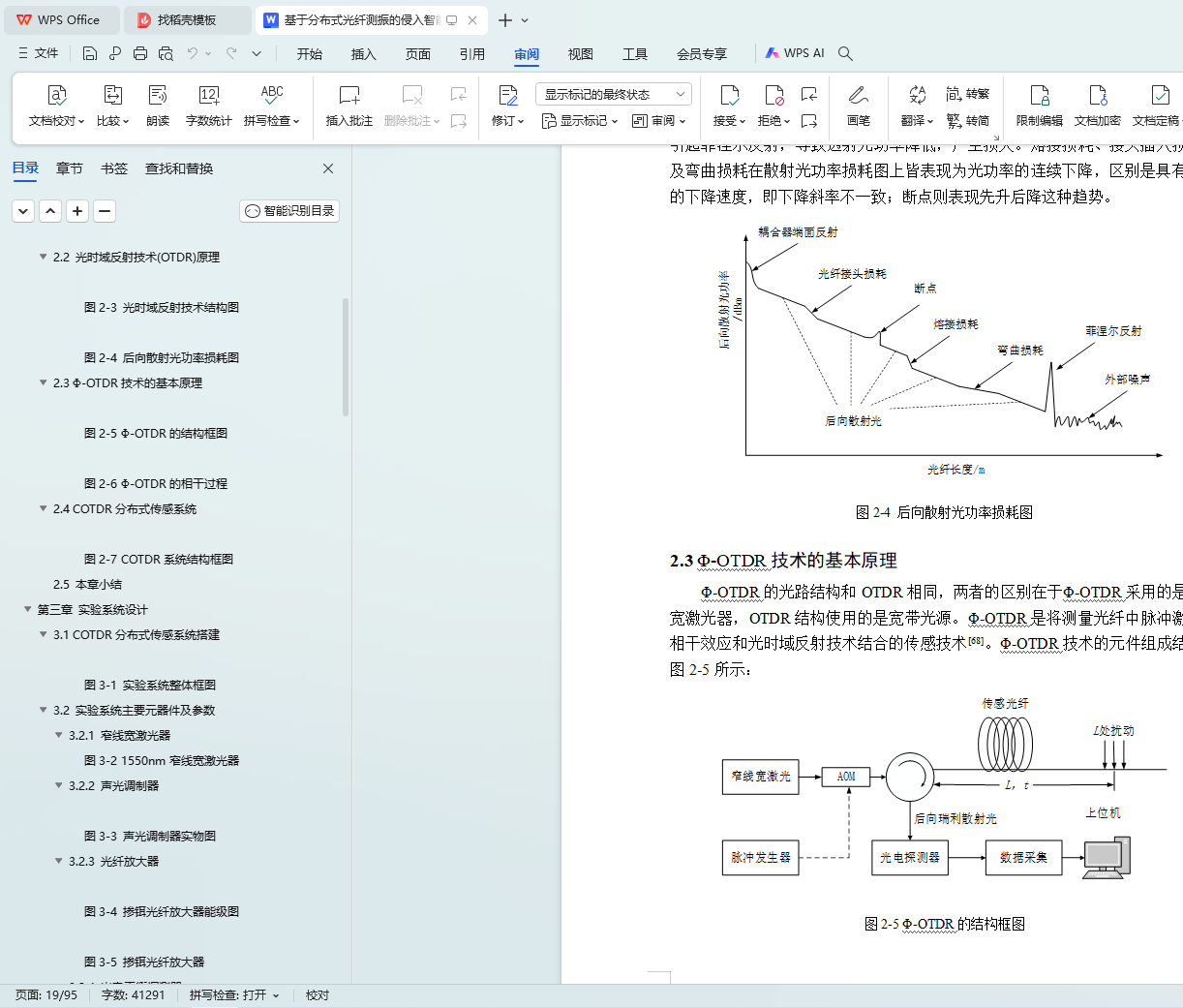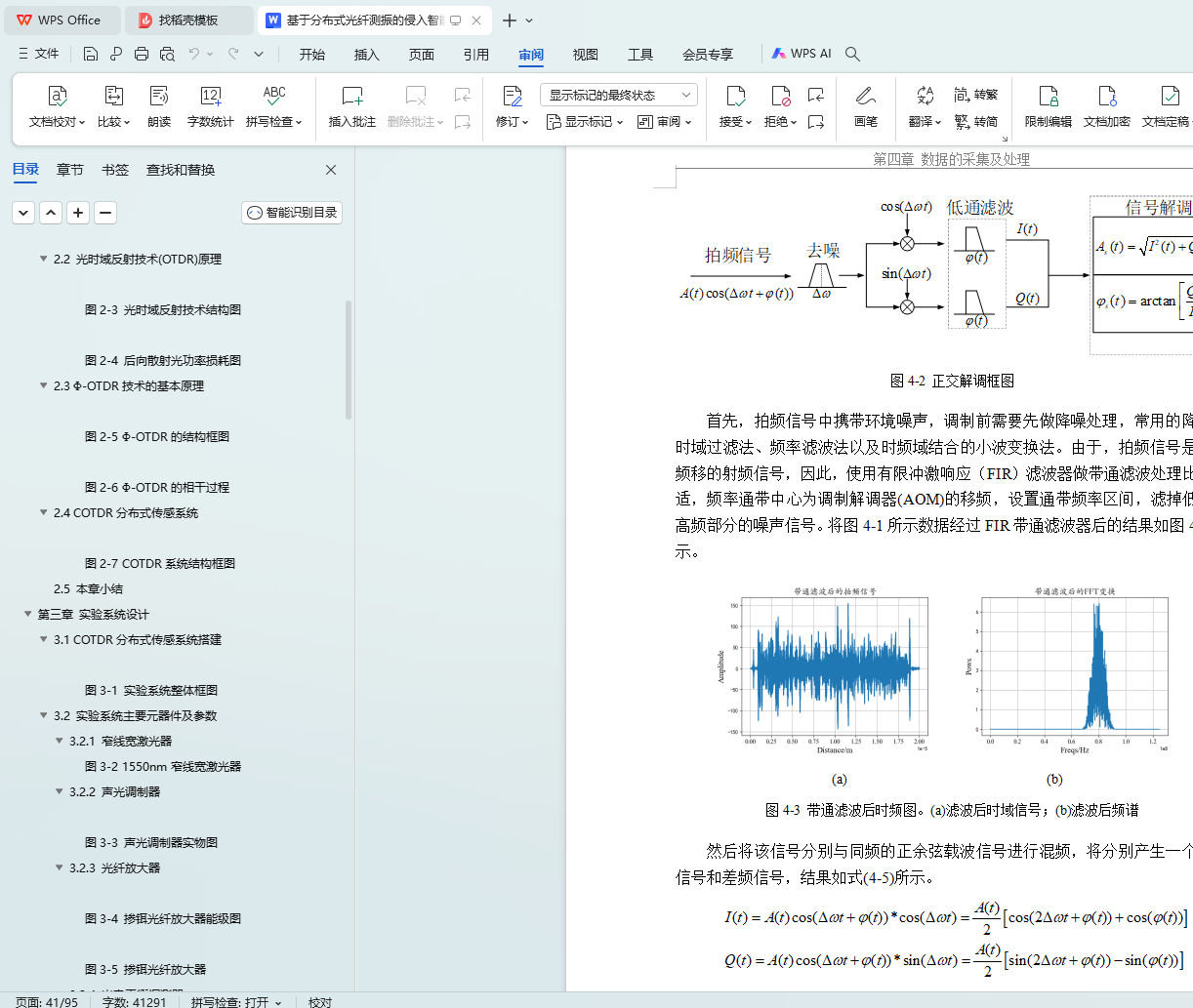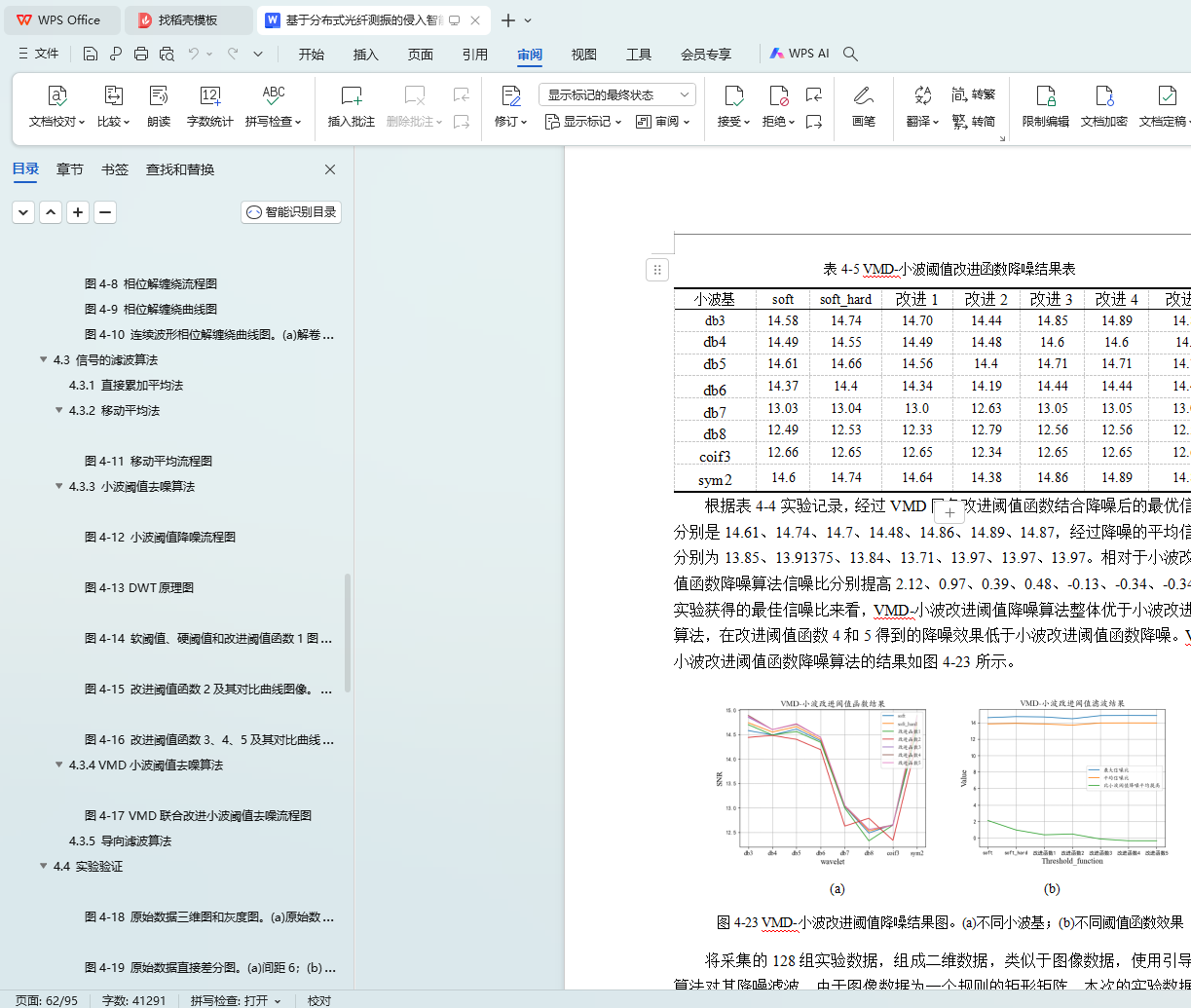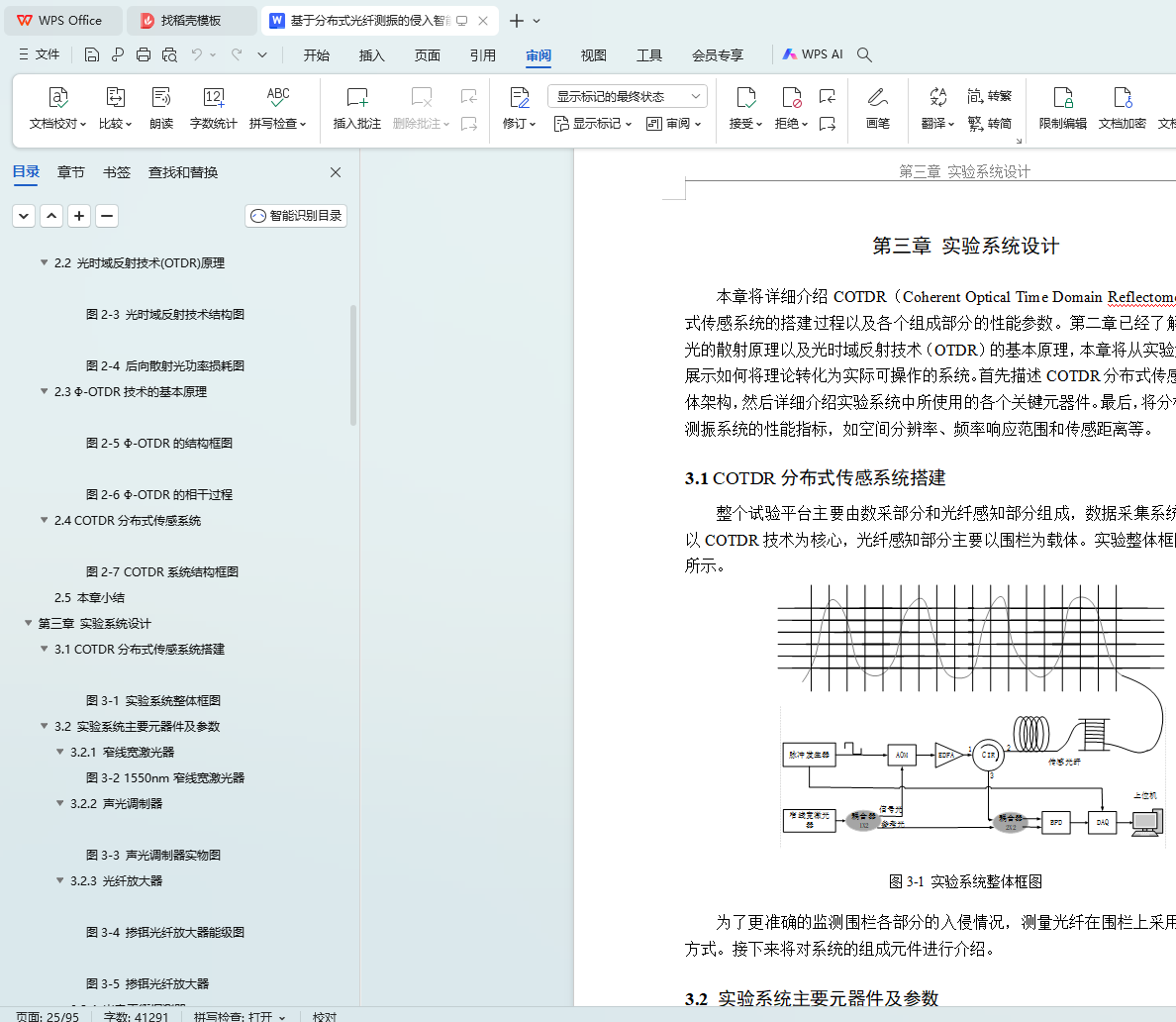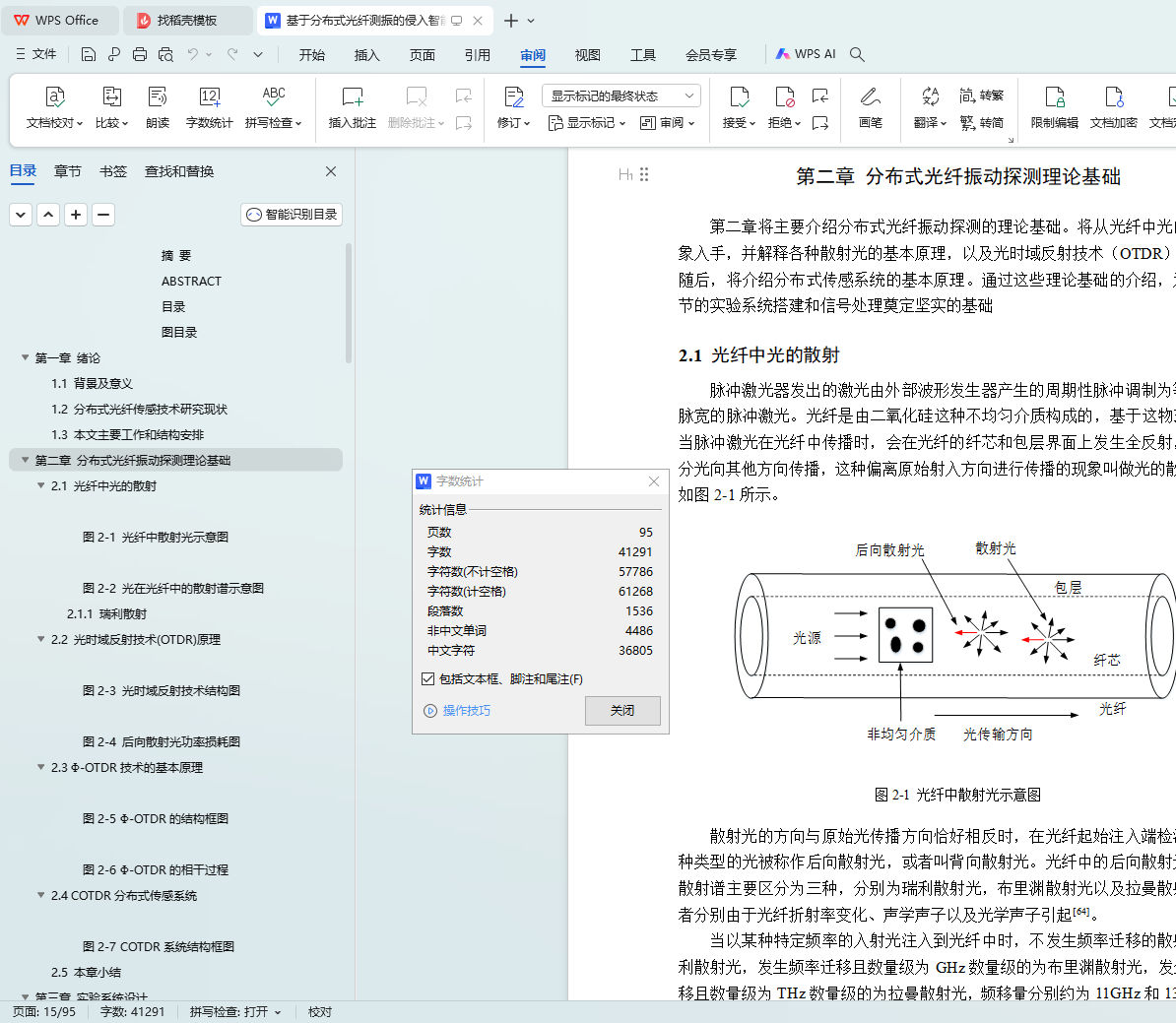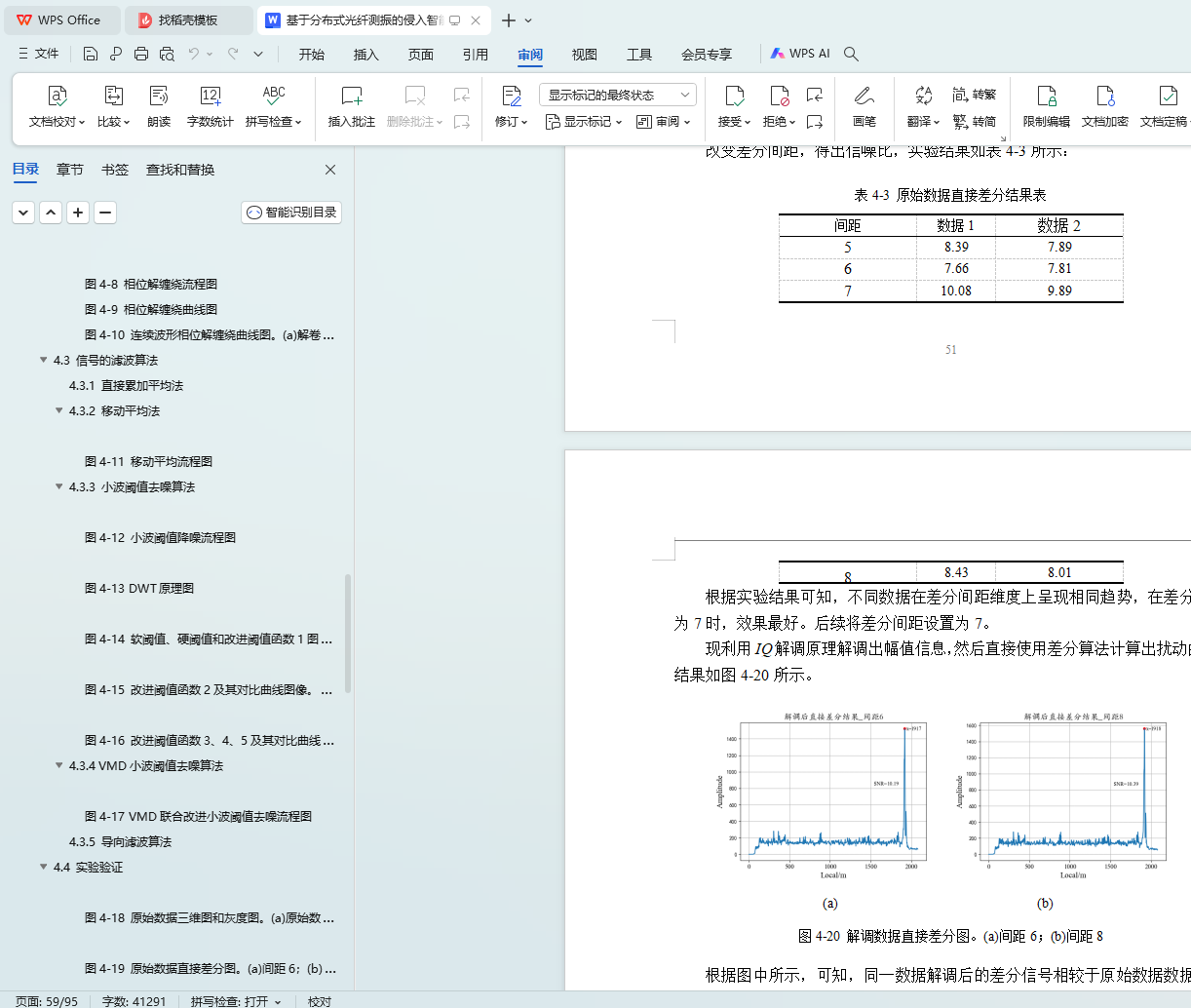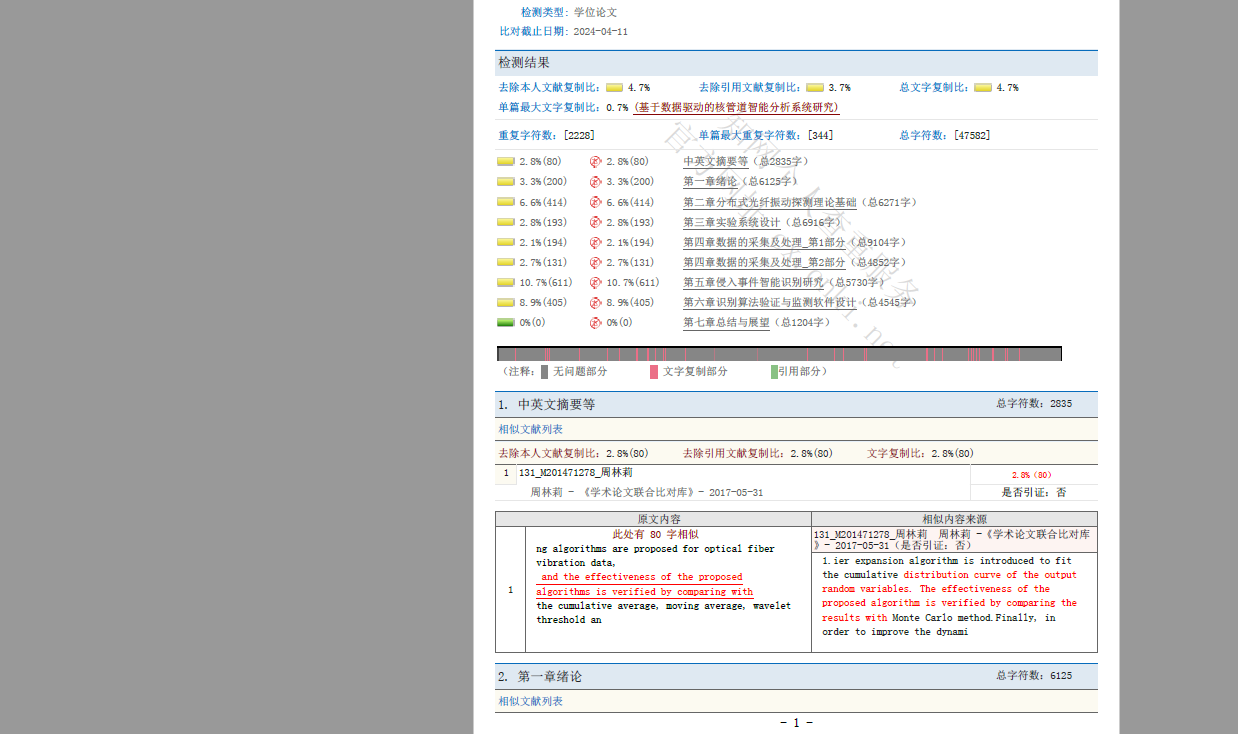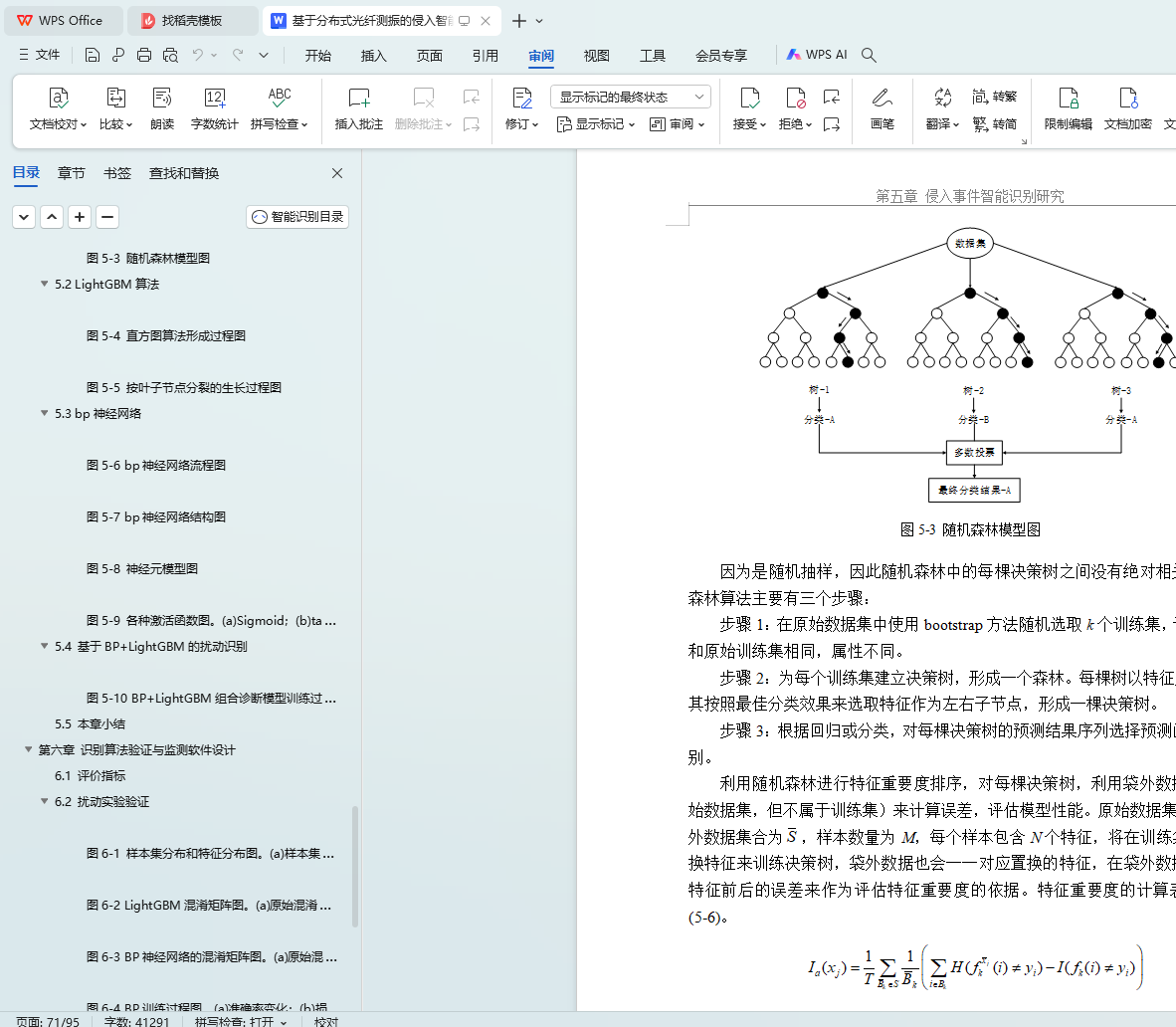基于分布式光纤测振的侵入智能识别方法研究(硕士论文)+知网查重报告
摘 要
本文旨在探讨分布式光纤振动探测技术在围栏安防监控中的应用。首先,介绍了分布式光纤传感技术的研究背景及其在安防监控领域中的重要性。随后,通过对分布式光纤振动探测的理论基础进行解析,主要介绍了光纤中光的几种散射现象和光时域反射技术的发展和改进,为后续研究奠定了基础。然后,设计并搭建了COTDR分布式传感系统,并评估了其性能指标。在数据的采集及处理方面,针对光纤振动数据提出了VMD-小波改进阈值函数降噪以及导向滤波处理算法,并通过和累加平均、移动平均、小波阈值降噪、小波改进阈值函数降噪进行效果对比,验证了本文所提出的算法的有效性。针对侵入事件智能识别问题,以围栏作为实验场地,采集了安静、攀爬、敲击、虚假扰动和吹风扰动五种扰动事件数据,事件标签分别为0、1、2、3、4,共3108个样本数据。提出了基于BP+LightGBM的神经网络识别算法,并和单独的LightGBM、BP神经网络模型进行了对比实验。针对同一数据集,LightGBM、BP神经网络和BP+LightGBM神经网络识别模型的预测准确率分别为92.44%、92.12%、98.71%。并且,LightGBM、BP神经网络模型对事件1的识别准确率只有71.0%和86.3%,BP+LightGBM神经网络识别模型对事件1的识别准确率为96.9%。实验结果表明,本文所提算法不仅具有更高的识别准确率,还能够有效改善LightGBM、BP神经网络模型对各类事件的预测不平衡性。
关键词:分布式光纤传感,光纤周界安防,BP神经网络,LighGBM
ABSTRACT
This thesis aims to discuss the application of distributed fiber optic vibration detection technology in fence security monitoring. Firstly, the research background of distributed optical fiber sensing technology and its importance in the field of security monitoring are introduced. Then, the theoretical basis of distributed fiber vibration detection is analyzed, and the development and improvement of optical time-domain reflectometry (OTDR) technology are introduced, which lays a foundation for the follow-up research. Then, the COTDR distributed sensing system is designed and built, and its performance index is evaluated. In terms of data acquisition and processing, VMD-wavelet improved threshold function denoising and guided filter processing algorithms are proposed for optical fiber vibration data, and the efficacy of the proposed algorithm is validated through comparison with the cumulative average, moving average, wavelet threshold and wavelet improved threshold function denoising. In order to solve the problem of intelligent identification of intrusion events, the data of quiet disturbance, climbing disturbance, knocking disturbance, false disturbance and blowing disturbance were collected by using fence as the experimental site. The event labels were 0, 1, 2, 3 and 4, and a total of 3108 sample data were collected. A neural network recognition algorithm based on BP+LightGBM is proposed and compared with the single LightGBM and BP neural network models. For the same data set, the prediction accuracy of LightGBM, BP neural network and BP+LightGBM neural network is 92.44%, 92.12% and 98.71%, respectively. In addition, the recognition accuracy of the LightGBM and BP neural network models for event 1 is only 71.0% and 86.3%, and the recognition accuracy of the BP+LightGBM neural network model for event 1 is 96.9%. The experimental results show that the proposed algorithm not only has higher recognition accuracy, but also can effectively improve the prediction unbalance of LightGBM and BP neural network models for various events.
Keywords: Distributed Optical Fiber Sensing, Fiber Perimeter Security, BP neural network, LighGBM
目录

